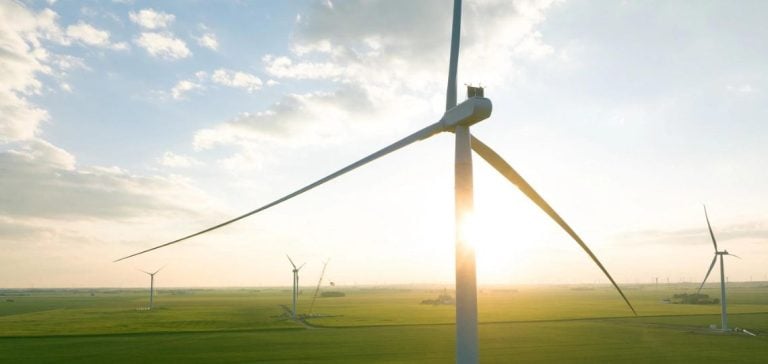bp announces the sale of its onshore wind energy business in the United States, marking a significant step in its strategy to decarbonize and simplify its portfolio.
The company, which focuses on the development of renewable energies through Lightsource bp, plans to divest bp Wind Energy, which holds interests in ten operational wind assets.
These assets have a total net generating capacity of 1.3 GW, contributing to bp’s energy transition towards a more integrated and sustainable model.
bp’s decision to divest its onshore wind business comes at a time when the company is seeking to refocus on more profitable renewable energy projects aligned with its strategic objectives.
By integrating the development of onshore renewable energy into Lightsource bp aims to strengthen its position in the renewable energy market while optimizing its operations.
This initiative reflects a desire to simplify and focus on higher value-added activities.
A transition to integrated renewable energies
bp Wind Energy, which currently manages nine of the ten wind farm assets, is a key player in the American energy landscape.
The facilities, all connected to the grid, already supply electricity to a variety of customers.
The Houston-based remote operations center oversees these assets, ensuring efficient and responsive management.
William Lin, bp’s executive vice president for gas and low-carbon energy, emphasizes the importance of renewables in the company’s strategy: “Renewables are an important part of our strategy as bp transforms into an integrated energy company.” The sale of bp Wind Energy is also seen as an opportunity for another owner to capitalize on the quality of the assets.
Lin points out that “bp Wind Energy’s assets are high-quality and grid-connected, but do not align with our growth plans in Lightsource bp. We therefore believe that the business is likely to be of greater value to another owner.” This pragmatic approach allows bp to focus on its strategic priorities while ensuring continuity for employees and operations.
A future centered on Lightsource bp
In November 2023, bp announced its intention to take full control of Lightsource bp, its solar development joint venture.
The acquisition, which is expected to close before the end of the year, will enable bp to support Lightsource bp’s continued growth and expand its large-scale renewable asset development capabilities.
The integration of onshore renewable energy projects into Lightsource bp is designed to meet the company’s growing demand for low-carbon energy, while helping its customers decarbonize their operations.
bp’s strategy is part of a broader energy transition framework, where the focus is on creating a simpler, more value-driven business.
By initiating the process of selling bp Wind Energy, bp is demonstrating its commitment to streamlining its operations while preserving the expertise of its staff, who should be transferred to the new buyer.
The aim is to ensure that the assets continue to operate efficiently and contribute to the production of renewable energy.
Outlook for the renewable energy market
The renewable energy market continues to evolve rapidly, with growing demand for sustainable energy solutions.
bp’s decision to focus on Lightsource bp and divest its onshore wind assets reflects a broader trend in the industry, where companies are looking to specialize in specific segments to maximize their impact and profitability.
Market players have to navigate a complex environment, where regulations, consumer expectations and technological advances play a crucial role.
By integrating its renewable energy projects into a more coherent structure, bp is positioning itself to take advantage of future opportunities in the renewable energy sector.
The ability to adapt to market changes and respond to customer needs will be key to the company’s success in this new energy era.
The transition to a low-carbon economy requires strategic investment and a clear vision, and bp seems determined to play a leading role in this transformation.






















